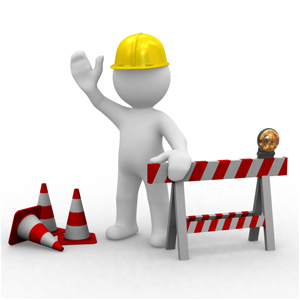The team at Oceania Gold learnt a hard lesson about putting up physical barriers. Read OceanaGold to pay $728k over worker death for full details.
What Happened?
- On July 28th, 2016, Tipiwai Stainton (27) died when the loader he was driving fell 15m into a void. It was the first mining fatality since Pike River
What could have prevented the fatality?
- The risk associated with voids/holes had been identified by the company and it is industry standard to build a safety barrier – a 1.5m high bund – in front of steep slopes
- OceanaGold have developed a new practice that involves placing steel bollards along open slopes
What did the court say?
OceanaGold pleaded guilty In a Tauranga District Court and was convicted of, a single charge of failing to ensure, so far as reasonably practicable of exposing a worker to the risk of death under HSAW 2015.
The charge carried a maximum fine of $1.5 million, Judge Thomas Ingram’s sentencing was as follows:
– Fine of $378,000
– Reparation of $350,000
– Court costs of $3672
Side Bar: The fine was greatly reduced
Thomas J noted that OceanaGold’s handling of the aftermath was “exemplary” and praised its efforts to alleviate the family’s suffering and prevent the accident from recurring.
Bernie O’Leary: General Manager said the company deeply regretted the loss of one of its staff and accepted that it was responsible for his death.
“Tip was our colleague, friend and a member of our Mines Rescue Team,” O’Leary said. He died at our mine, on our watch. We accept responsibility for what happened and have been working alongside his family to make sure that as a company, as workmates, and as friends, we continue to do everything possible to support them and prevent this from ever happening again.”
Key Learnings about Barriers:
1.Know your industry standards
If there are similar organisations that are getting it right you need to do the same. “It’s too expensive” won’t fly if it is standard practice elsewhere
2. Use Physical barriers and Signage
Much like the Stumpmaster Limited case where the company was charged for not using physical barriers and signage (which were available) when felling a palm tree, businesses need to make the effort to:
1. Keep members of the public separate from operating areas
2. Fence off working areas
3. Batter back open faces and use barriers, signage and wheelstoppers where there is a risk to vehicles
WorskafeNZ Resources:
- Excavation safety
- Approved Code of Practice for Operator Protective Structures on Self-Propelled Mobile Mechanical Plant
- Health and Safety at Opencast Mines, Alluvial Mines and Quarries (PDF 12 MB) WorkSafe New Zealand
Have a safe and productive week and as always let me know if you have anything to add about how to effectively use barriers around excavations.
SB
